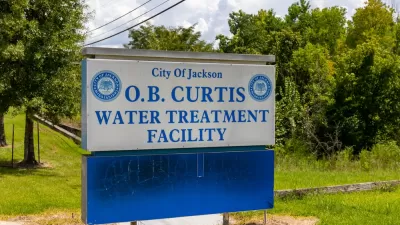Pretty Prairie has water with very high levels of nitrates, and lots of farmers that need to use nitrates if they want to keep the local economy going.

This month’s issue of Harper’s has a long piece by Elizabeth Roye that’s worth reading just for its exploration of how difficult it is for rural areas to provide clean drinking water for their small populations when their way of life is already threatened.
It takes place in Pretty Prairie, Kansas, where the content of nitrates in the water—due to fertilizer used on farmland that comprises over 90 percent of the land—has, for decades, exceeded the limits established by the EPA.
A reverse-osmosis plant has always been only barely feasible economically, but as Royte learns, trying to get the farmers to stop using as much fertilizer is an equally challenging proposition: “Less fertilizer means lower yields, and if farmers earn less, they might default on loans, exacerbating the shrinking of the town.”
In the end, a place with 320 ratepayers has now borrowed enough to build a plant that can remove nitrates from the water, and the town clerk tells Royte, with relief, that they will never have to worry about water again.
“That may be true,” Royte writes, “but I suspected Brace’s sense of relief—and the community’s—was related more to social, rather than civil, engineering. A decision had been made: the farmers would do their best, within the bounds of their economies, and the townsfolk—with a onetime boost from the feds—would continue uncomplainingly to clean up after them.”
FULL STORY: Drinking Problems

Alabama: Trump Terminates Settlements for Black Communities Harmed By Raw Sewage
Trump deemed the landmark civil rights agreement “illegal DEI and environmental justice policy.”

Study: Maui’s Plan to Convert Vacation Rentals to Long-Term Housing Could Cause Nearly $1 Billion Economic Loss
The plan would reduce visitor accommodation by 25% resulting in 1,900 jobs lost.

Planetizen Federal Action Tracker
A weekly monitor of how Trump’s orders and actions are impacting planners and planning in America.

DC Extends Application Window for Outdoor Dining Permits
District restaurants will have until the end of November to apply, but businesses with permits in rush hour parking lanes must end operations on July 31.

Wind Energy on the Rise Despite Federal Policy Reversal
The Trump administration is revoking federal support for renewable energy, but demand for new projects continues unabated.

Passengers Flock to Caltrain After Electrification
The new electric trains are running faster and more reliably, leading to strong ridership growth on the Bay Area rail system.
Urban Design for Planners 1: Software Tools
This six-course series explores essential urban design concepts using open source software and equips planners with the tools they need to participate fully in the urban design process.
Planning for Universal Design
Learn the tools for implementing Universal Design in planning regulations.
Caltrans
Smith Gee Studio
Institute for Housing and Urban Development Studies (IHS)
City of Grandview
Harvard GSD Executive Education
Toledo-Lucas County Plan Commissions
Salt Lake City
NYU Wagner Graduate School of Public Service



























